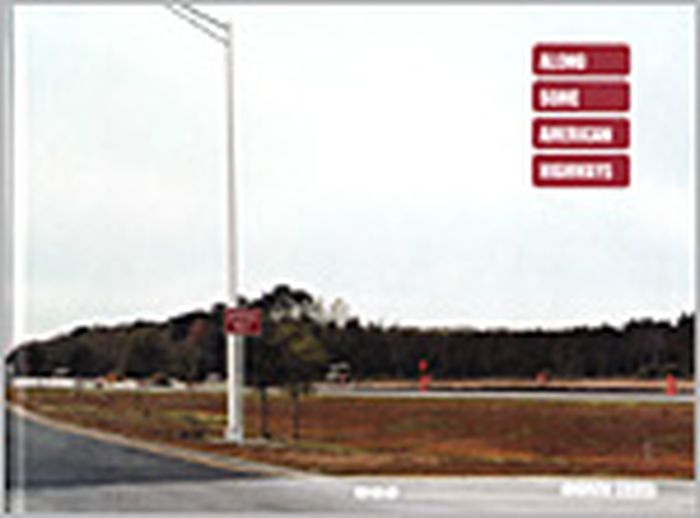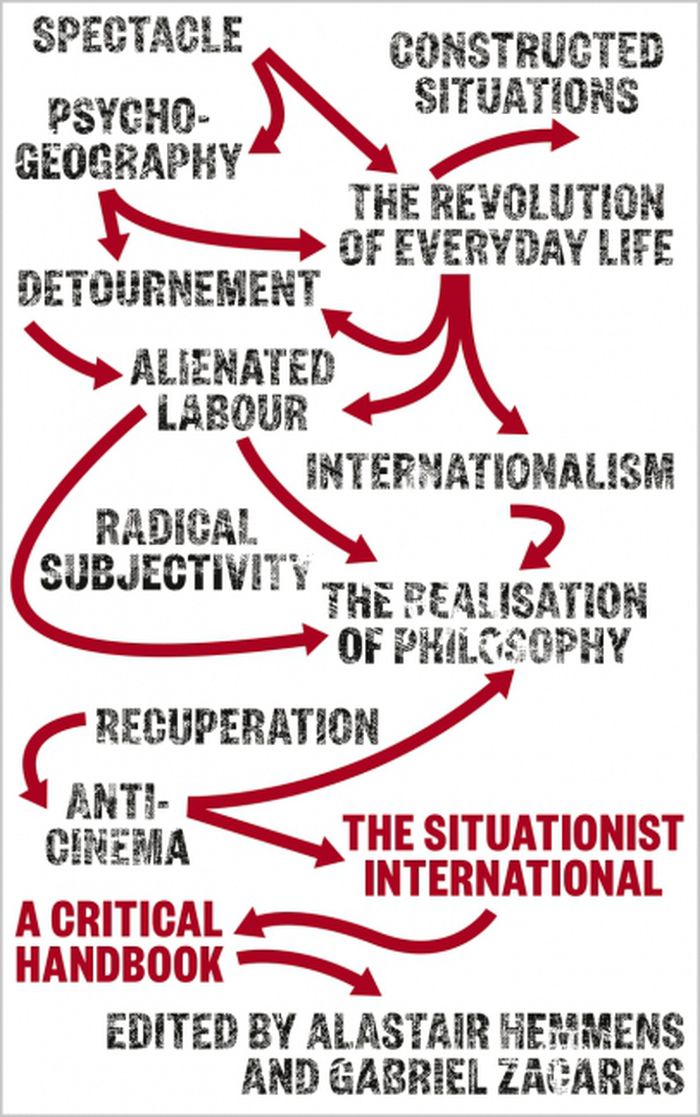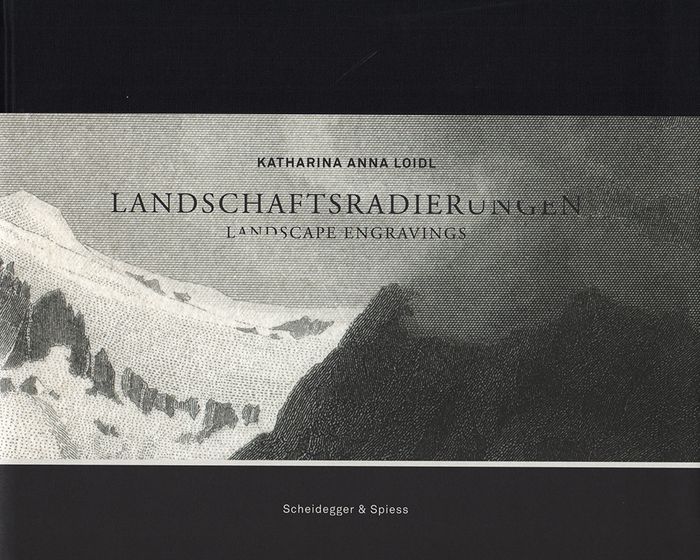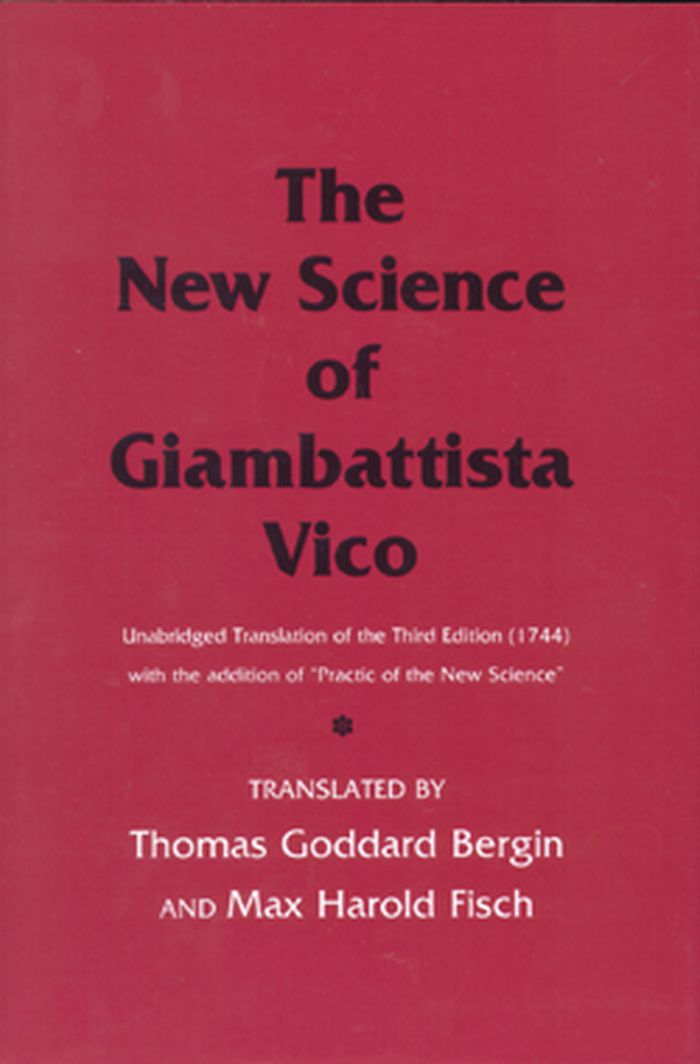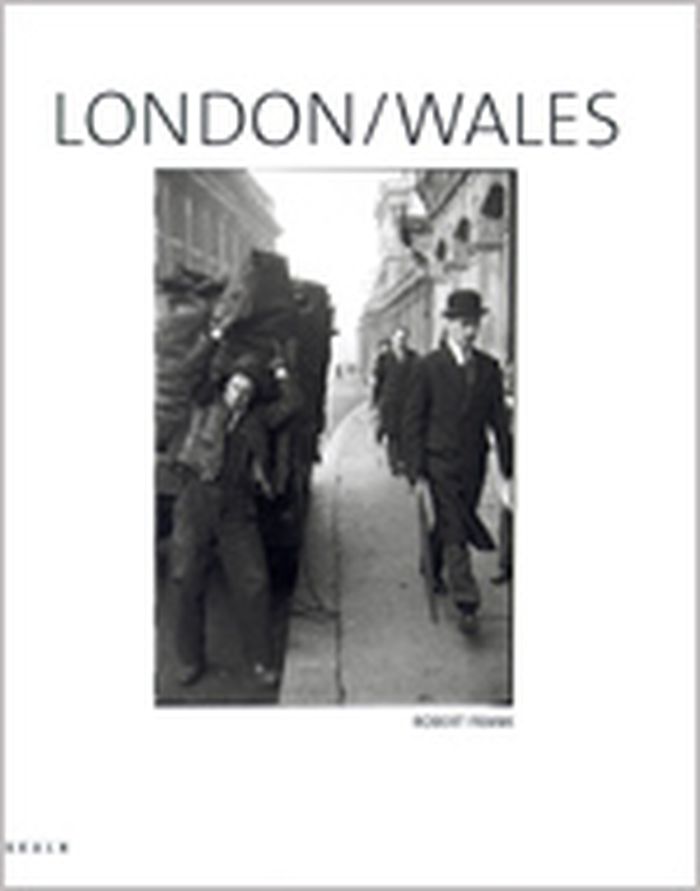Along some American highways
$44.95
(disponible sur commande)
Résumé:
Andrew Cross's photographs depict the spaces of the long distance road-trip - the places passed through and passed by - a landscape that is now familiar almost wherever we are. It is the vernacular landscape of a growing consumer culture - fast food outlets, shopping malls, distribution depots, truck stops - that have congregated around highway exits and(...)
Monographies photo
septembre 2003, London / New York
Along some American highways
Actions:
Prix:
$44.95
(disponible sur commande)
Résumé:
Andrew Cross's photographs depict the spaces of the long distance road-trip - the places passed through and passed by - a landscape that is now familiar almost wherever we are. It is the vernacular landscape of a growing consumer culture - fast food outlets, shopping malls, distribution depots, truck stops - that have congregated around highway exits and intersections. This volume further contributes to his already widely published and exhibited body of work, both in Europe and America. With "Along some American highways" Andrew Cross continues his preoccupation with the functions and environments of motorised transportation. Andrew Cross brings together the inherent romanticism of the road journey with the corporate culture that now so dominates not only the environment of the American road-trip but also the wider world. His photographs are a traveller's glance of places that are themselves transient and impermanent, but all pervasive.
Monographies photo
$48.95
(disponible sur commande)
Résumé:
From its foundation in 1957 to its self-dissolution in 1972, the Situationist International established itself as one of the most radical revolutionary organisations of the twentieth century. This book brings together leading researchers on the SI to provide a comprehensive critical analysis of the group's key concepts and contexts, from its relationship to earlier(...)
The Situationist International: A critical handbook
Actions:
Prix:
$48.95
(disponible sur commande)
Résumé:
From its foundation in 1957 to its self-dissolution in 1972, the Situationist International established itself as one of the most radical revolutionary organisations of the twentieth century. This book brings together leading researchers on the SI to provide a comprehensive critical analysis of the group's key concepts and contexts, from its relationship to earlier artistic avant-gardes, romanticism, Hegelianism, the history of the workers' movement and May '68 to the concepts and practices of 'spectacle', 'constructed situations', 'everyday life' and 'detournement'. The volume also considers historically underexamined areas of the SI, including the situation of women in the group and its opposition to colonialism and racism. With contributions from a broad range of thinkers including Anselm Jappe and Michael Loewy, this account takes a fresh look at the complex workings of a group that has come to define radical politics and culture in the post-war period.
Théorie/ philosophie
$64.00
(disponible sur commande)
Résumé:
Austrian artist Katharina Anna Loidl has reworked steel engravings of Swiss alpine landscapes, transforming the original nineteenth-century prints with an etching needle and burin. By carefully removing parts of the printer’s ink, Loidl also removes portions of the landscapes. In their place, she introduces simple geometric shapes, deliberately lacking in distinguishing(...)
Landscape engravings: Katharina Anna Loidl
Actions:
Prix:
$64.00
(disponible sur commande)
Résumé:
Austrian artist Katharina Anna Loidl has reworked steel engravings of Swiss alpine landscapes, transforming the original nineteenth-century prints with an etching needle and burin. By carefully removing parts of the printer’s ink, Loidl also removes portions of the landscapes. In their place, she introduces simple geometric shapes, deliberately lacking in distinguishing architectural detail so that viewers are encouraged to imagine the addition of structures of their choosing—apartment blocks, industrial buildings, or sports facilities—to the idyllic images. Landscape Engravings brings together fifty of Loidl’s alpine landscapes. Vitus Weh's essay examines the sublime and crystalline character of Loidl’s art, and Paolo Bianchi looks at aspects of romanticism as a fund, landscape as a sensation, and the art of repetition. By introducing spatial interventions to the idyllic, perhaps idealized, images, Loidl asks the reader to consider the impact of residential and industrial encroachment on the natural world and the value we ought to place on its preservation.
$25.00
(disponible sur commande)
Résumé:
Translates by Thomas Goddard Bergin and Max Harold Fisch. A bold new translation of a masterpiece of early social science that has found enthusiasts among such artists and scholars as James Joyce and Harold Bloom. Although Vico lived his whole life as an obscure academic in Naples, his New Science is an astonishingly ambitious attempt to provide a comprehensive(...)
The new science of Giambattista Vico
Actions:
Prix:
$25.00
(disponible sur commande)
Résumé:
Translates by Thomas Goddard Bergin and Max Harold Fisch. A bold new translation of a masterpiece of early social science that has found enthusiasts among such artists and scholars as James Joyce and Harold Bloom. Although Vico lived his whole life as an obscure academic in Naples, his New Science is an astonishingly ambitious attempt to provide a comprehensive science of all human society by decoding the history, mythology, and law of the ancient world. It argues that the key to true understanding lies in accepting that the customs and emotional lives of the Greeks and Romans, Egyptians, Jews, and Babylonians were utterly different from our own. In examining these huge themes, Vico offers countless fresh insights into topics ranging from physics to politics, money to monsters, and family structures to the Flood. Deeply influential since the dawn of Romanticism, the New Science even inspired the framework for Joyce's Finnegans Wake. This powerful new translation makes it clear why this work marked a turning-point in humanist thinking as significant as Newton's contemporary revolution in physics.
Théorie/ philosophie
$91.00
(disponible sur commande)
Résumé:
Joseph Gandy’s life is in many respects the familiar saga of genius unrecognized. Upon his death he seemed to the world, and to himself, a failure. Having begun his career with high hopes, great imagination and exceptional talent, he ended it in a state of neglect and obscurity. A century and a half later Gandy is recognized as one of the most original figures of(...)
Joseph Gandy : an architectural visionary in Georgian England
Actions:
Prix:
$91.00
(disponible sur commande)
Résumé:
Joseph Gandy’s life is in many respects the familiar saga of genius unrecognized. Upon his death he seemed to the world, and to himself, a failure. Having begun his career with high hopes, great imagination and exceptional talent, he ended it in a state of neglect and obscurity. A century and a half later Gandy is recognized as one of the most original figures of English romanticism. Works such as "Pandemonium" or "Tomb of Merlin" have a hypnotic power that he brought to bear on Sir John Soane’s bizarre "Monk’s Parlour" at his renowned house-musuem in Lincoln’s Inn and on the lost masterpiece of Soane’s Bank of England in the City of London, buildings that we have come to see through Gandy’s eyes. Brian Lukacher, the acknowledged authority on Gandy, has now written the definitive life of this architect-artist who exemplified the cultural temper of the romantic period. It is a fresh, deeply researched biography and a critical assessment of Gandy’s work in its historical context. It is a tragic story but also an inspiring one, and a significant episode in the history of the architectural imagination and the visual arts during the nineteenth century.
Architecture, monographies
$39.99
(disponible sur commande)
Résumé:
At the opening of the nineteenth century, publishing houses in London, New York, Paris, Stuttgart, and Berlin produced books in ever greater numbers. But it was not just the advent of mass printing that created the era's 'bookish' culture. According to Andrew Piper, romantic writers played a crucial role in adjusting readers to this increasingly international and(...)
Dreaming in books: the making of the bibliographic imagination in the romantic age
Actions:
Prix:
$39.99
(disponible sur commande)
Résumé:
At the opening of the nineteenth century, publishing houses in London, New York, Paris, Stuttgart, and Berlin produced books in ever greater numbers. But it was not just the advent of mass printing that created the era's 'bookish' culture. According to Andrew Piper, romantic writers played a crucial role in adjusting readers to this increasingly international and overflowing literary environment. Learning how to use and want books occurred through more than the technological, commercial, or legal conditions that made the growing proliferation of books possible; the making of such bibliographic fantasies was importantly a product of the symbolic operations contained within books as well. Examining novels, critical editions, gift books, translations, and illustrated books, as well as the communities who made them, "Dreaming in Books" tells a wide-ranging story of the book's identity at the turn of the nineteenth century. In so doing, it shows how many of the most pressing modern communicative concerns are not unique to the digital age but emerged with a particular sense of urgency during the bookish upheavals of the romantic era. In revisiting the book's rise through the prism of romantic literature, Piper aims to revise our assumptions about romanticism, the medium of the printed book, and, ultimately, the future of the book in our so-called digital age.
Théorie de l’architecture
livres
Lost architectures
$55.50
(disponible sur commande)
Résumé:
This book stands in opposition to the popular notion that the best architecture is built on compromise. Rather, Neil Spiller argues, the most original and brave products of the architectural mind are often to be found in those projects which, for whatever reason, never came to fruition. (...)
janvier 2001, Great Britain
Lost architectures
Actions:
Prix:
$55.50
(disponible sur commande)
Résumé:
This book stands in opposition to the popular notion that the best architecture is built on compromise. Rather, Neil Spiller argues, the most original and brave products of the architectural mind are often to be found in those projects which, for whatever reason, never came to fruition. "Lost Architectures" presents an array of such projects from the last decades of the twentieth century, consituting the unrealised dreams of some of the most inspirational architects working in the period. Most of the projects featured here have seldom, if ever, been published before, and some represent the last hand-drawn work of their creators before the age of the computer finally came into full force. Whilst they do not follow any specific style, these projects embody a spirit defined by Spiller as New Romanticism - a spirit which combines elements of aesthetic decadence and a certain camp mannerism with a love of angularity and mechanised ritual. Some of the architects in question are still in practice, with a great deal of high-profile built work behind them; others have never been recognised as they perhaps should have been. In both cases, this book is an invaluable resource of information and inspiration for students of architecture, as well as for theorists, historians and lay readers. It provides essential exposure for a range of work of great vitality which might otherwise risk being lost in the course of time.
livres
janvier 2001, Great Britain
livres
$31.95
(disponible sur commande)
Résumé:
German artist Kurt Schwitters' Hannover Merzbau, a combination of collage, sculpture, and architecture, began, according to Schwitters, in 1923 with a small construction in a corner of the artist's studio, a room contained within the apartment he shared with (...)
Kurt Schwitters' Merzbau : the cathedral of erotic misery
Actions:
Prix:
$31.95
(disponible sur commande)
Résumé:
German artist Kurt Schwitters' Hannover Merzbau, a combination of collage, sculpture, and architecture, began, according to Schwitters, in 1923 with a small construction in a corner of the artist's studio, a room contained within the apartment he shared with members of his family. Also called "The Cathedral of Erotic Misery" or KdeE, the project eventually took over many of the spaces of his living quarters, filling the rooms with grottoes and caves dedicated to friends, artists, and cultural events. Left unfinished when Schwitters fled Hannover in early 1938, the Merzbau was completely destroyed during an Allied bombing raid over Hannover in 1943. While the project is usually listed as a marginal episode in the annals of Modern art and architecture, the Merzbau is of seminal importance in understanding the complex relationships between several European Avant-garde movements, including Expressionism, Dada, Constructivism, and Merz, the one-man movement Schwitters insisted was available to anyone. The project also provides information supporting the belief that artists such as Joseph Beuys and Robert Rauschenberg consciously extend the project of Merz. In delving into Schwitters' creative 'principles,' as well as the influences of prominent artists and architects on the Merzbau and vice versa, Elizabeth Burns Gamard discusses the project's physical evolution, its hidden meanings, and its significance within the artist's entire oeuvre. She also focusses on the relationship between Schwitters' ideas and those of German nature mysticism and German Romanticism, thus providing an extensive genealogy of the project as well.
livres
janvier 1960, New York
Théorie de l’architecture
livres
$34.95
(disponible sur commande)
Résumé:
Modern Architecture is a landmark text - the first book in which this American architect put forth the principles of a fundamentally new, organic architecture that would reject the trappings of historical styles while avoiding the geometric abstraction of the machine aesthetic advocated by contemporary European modernists. One of the most important documents in the(...)
Architecture, monographies
mars 2008, Princeton, Oxford
Modern architecture : being the Kahn Lectures for 1930
Actions:
Prix:
$34.95
(disponible sur commande)
Résumé:
Modern Architecture is a landmark text - the first book in which this American architect put forth the principles of a fundamentally new, organic architecture that would reject the trappings of historical styles while avoiding the geometric abstraction of the machine aesthetic advocated by contemporary European modernists. One of the most important documents in the development of modern architecture and the career of Frank Lloyd Wright, "Modern Architecture" is a provocative and profound polemic against America's architectural eclecticism, commercial skyscrapers, and misguided urban planning. The book is also a work of savvy self-promotion, in which Wright not only advanced his own concept of an organic architecture but also framed it as having anticipated by decades - and bettered -what he saw as the reductive modernism of his European counterparts. Based on the 1931 original, for which Wright supplied the cover illustration, this edition includes a new introduction that puts "Modern Architecture" in its broader architectural, historical, and intellectual context for the first time. The subjects of these lively lectures -from "Machinery, Materials and Men" to "The Tyranny of the Skyscraper" and "The City" - move from a general statement of the conditions of modern culture to particular applications in the fields of architecture and urbanism at ever broadening scales. Wright's vision in "Modern Architecture" is ultimately to equate the truly modern with romanticism, imagination, beauty, and nature - all of which he connects with an underlying sense of American democratic freedom and individualism.
livres
mars 2008, Princeton, Oxford
Architecture, monographies
$67.95
(disponible sur commande)
Résumé:
Between 1949 and 1953, Robert Frank continually returned to Europe from his new home in New York to take photographs in France, Switzerland, Spain, and Great Britain, photographs that show the development of his uniquely humanist, poetic, and realist eye. In 1951 and early 1952, Frank visited London--"I liked the light, I liked the fog."--and set out to photograph the(...)
Monographies photo
juin 2003, Zurich, Berlin and New York
Robert Frank : London / Wales
Actions:
Prix:
$67.95
(disponible sur commande)
Résumé:
Between 1949 and 1953, Robert Frank continually returned to Europe from his new home in New York to take photographs in France, Switzerland, Spain, and Great Britain, photographs that show the development of his uniquely humanist, poetic, and realist eye. In 1951 and early 1952, Frank visited London--"I liked the light, I liked the fog."--and set out to photograph the unique atmosphere of the city. He followed British financiers around the City, capturing them in their traditional top hats and long coats, creating images that depict them in a poetic dance with their fog-shrouded environment. He shot pictures of workers, men delivering coal, children playing on the streets, people waiting or relaxing in the parks, and images of poverty. In these photographs he juxtaposed money and work, wealth and poverty, creating a dynamic photographic project that has never been shown before in its entirety. Then, in March 1953, before the impending nationalization of the country's coal mines, Frank travelled to the town of Careau, in Wales, to photograph the coal miners whose lives revolved around their work. One miner, Ben James, and his family became the subject of a picture essay (originally published in a 1955 issue of U.S. Camera) in which Frank downplayed the classic modernist photographic moment in favor of a more provocative form that offered informal, revealing glances rather than an official document. In "Robert Frank: London/Wales", Frank returns for the first time to these old negatives. The volume explores a stylistic transformation in his work, a period of development which saw his mode of photography move from an innovative romanticism to a highly charged, metaphorical realism.
Monographies photo
